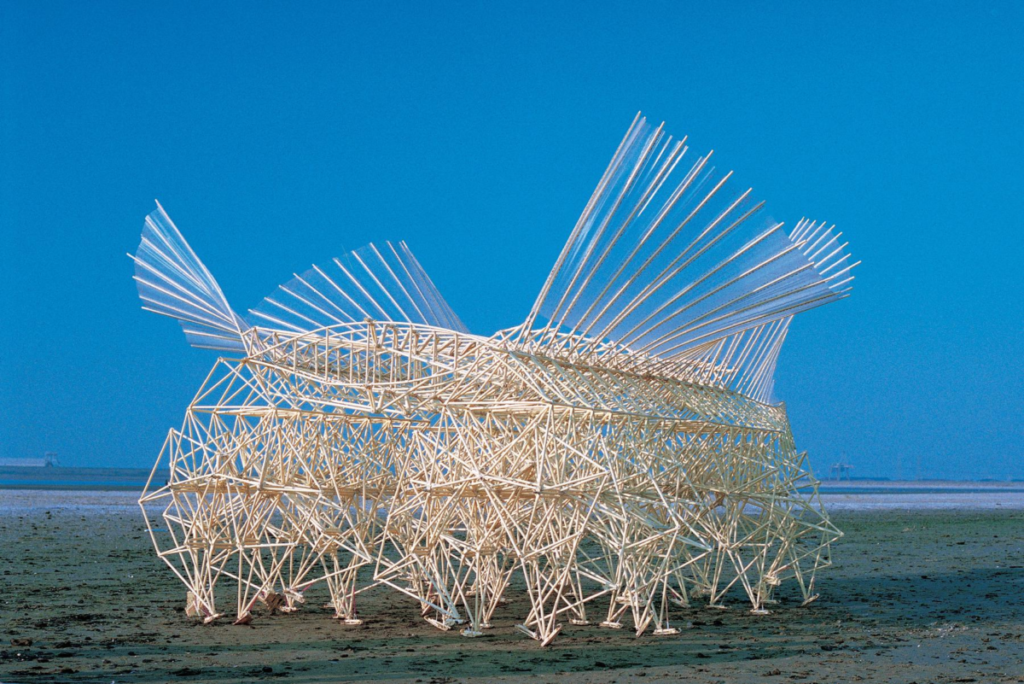
Theo Gerardus Jozef Jansen is a Dutch artist, best known for his “Strandbeesten” (plural for “Beach Animals” in English). He started his research in computer simulated algorithmic linkages (known as evolutionary computation) in the early 90s, looking for different sets of linkages to mimic or emulate that of the human walk cycle. He considers this the “genetic code” of the Strandbeesten.

He was successful in doing so, and went on to look for ways of implementing it in the real world. It was clear that this would be a walking machine of some sort. He started looking for environments or habitats where this method of locomotion would be more efficient than wheels, which is what led him to the beach.

Jansen saw his creations as “artificial life” due to the oddly organic perception they gave off in motion. As a result, he wanted to ensure that they could survive on their own in civilization were to fall. As a result, all of his Strandbeesten must exclusively be powered by the passing wind. They typically also have a “Feeler”, which can be thought of as a single neuron (pneumatic switch/sensor) protruding from the center that can detect when the passage of air has been constrained mechanically (ex: water being in the way) and then tell the “brain” (a binary step counter) to reverse the direction of its walk to avoid drowning. This isn’t done with any computer, it is all mechanical, with the “encoding” of this binary done through the use of pressurized plastic bottles, which decide the direction the Strandbeest walks in.
Using nothing more than PVC pipes, wood, fabric airfoils and zip-ties, Jansen was able to set free the Strandbeesten unto the world, to much admiration by the public. He sees them as living beings, and his experience creating these Strandbeesten has led him to perceive engineering and art to be two sides of the same coin, not unlike the cultural perception of craftsmanship held in collectivistic societies like Japan.
Currently, Jansen is working with NASA for a potential Strandbeest launch for Mars. The lack of circuitry or electricity needed means that it could be the case that the first true inhabitants of Mars will be Jansen’s creations. Jansen has also discussed his creations in a post-human context. He believes that if, for whatever reason, humanity ceases to exist, extraplanetary visitors will be able to deduce a lot of human kind from the beings he’s left to roam the planet.
Theo’s purview of art and engineering being one-in-the-same, coupled with the timelessness of his executions (both in it’s potential to advance our understanding of Mars, and its very simple construction) has been very influential on my work. Maybe it’s the music in his Strandbeest evolution, or the organic feeling his creations give, but I can’t help but feel something approaching a connection to these piles of sticks.
Jansen is also on record saying that the recent revolution of 3D printed Strandbeesten is the natural process of “reproduction”, and has encouraged many to do their best to iterate on it. The linkages and proportions of his creations being made available and the public has made Strandbeesten and engineering nerds’ dream come true. As such, I’ve included a short video demoing my attempt.

If you think it’s cool but wouldn’t spend months making your own like I did, Theo has a kit on his website that lets you assemble your own strandbeest that moves when you blow on it.
Print this page



Leave a Reply